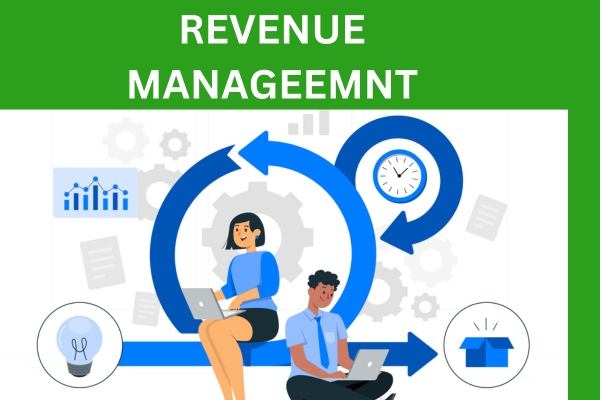In the ever-evolving landscape of online commerce, businesses are constantly seeking innovative ways to secure their financial stability and build a loyal customer base. Recurring revenue management, through the implementation of subscription-based models, offers an effective solution to achieve these goals. This article will delve into the intricacies of recurring revenue management for online stores and provide insights into the advantages it brings.
Understanding Recurring Revenue
Recurring revenue refers to the predictable and continuous income generated by online businesses through subscription-based products or services. Unlike one-time purchases, recurring revenue models allow businesses to establish long-term relationships with their customers, ensuring a steady stream of revenue. Examples of recurring revenue models include monthly subscription boxes, software-as-a-service (SaaS) platforms, membership-based websites, and more.
Benefits of Implementing Recurring Revenue Models
Retaining Customers and Ensuring Predictable Revenue
Implementing recurring revenue models enables online stores to build strong customer relationships and enhance customer loyalty. By offering a subscription-based service, businesses encourage customers to commit to regular payments, ensuring a predictable revenue stream.
Creating a Sustainable Business Model
Recurring revenue models provide stability and sustainability to online businesses. With a consistent income flow, companies can better forecast their finances, allocate resources efficiently, and plan for future growth and expansion.
Increasing Customer Lifetime Value
Recurring revenue models allow businesses to extend their customer lifetime value by nurturing ongoing relationships. Through personalized experiences, targeted offers, and regular engagement, companies can increase customer retention and encourage upselling and cross-selling opportunities.
Challenges of Recurring Revenue Management
Customer Churn and Retention
Retaining customers and minimizing churn is a crucial challenges in recurring revenue management. Online stores must focus on consistently delivering value, addressing customer concerns, and adapting to changing customer needs to reduce the likelihood of cancellations.
Pricing and Value Proposition
Determining the right price for subscription-based products or services can be challenging. Online stores need to strike a balance between affordability and profitability while providing customers with a compelling value proposition that justifies their recurring investment.
Billing and Payment Processing
Managing recurring billing and payment processing can be complex and time-consuming. Online stores must invest in robust payment gateways and systems that offer seamless experiences, automated notifications, and secure transactions to streamline the payment process.
Best Practices for Successful Implementation
Know Your Target Audience
Before implementing a recurring revenue model, it is crucial to understand your target audience and their needs. Conduct market research, gather customer feedback, and identify the pain points your subscription-based product or service can address effectively.
Offer Flexible Subscription Plans
Provide a range of subscription plans to cater to different customer preferences. Consider offering monthly, quarterly, and annual options, allowing customers to choose the plan that best suits their needs and budget.
Deliver Consistent Value
Consistently deliver value to your subscribers to justify their recurring payments. Continuously improve your product or service, provide exclusive benefits to subscribers, and engage with customers through personalized communication.
Monitor Key Metrics
Regularly track and analyze key metrics related to your recurring revenue model. Keep an eye on metrics such as customer churn rate, average revenue per user (ARPU), customer acquisition cost (CAC), and customer lifetime value (CLV) to gain insights and make data-driven decisions.
Provide Excellent Customer Support
Invest in a robust customer support system to address customer queries, concerns, and issues promptly. Offer multiple channels of communication, such as email, live chat, and phone support, to provide a seamless and satisfactory customer experience.
Optimizing Customer Retention
To optimize customer retention in recurring revenue management, online stores should focus on the following strategies:
Personalization and Customization
Tailor your product or service to meet individual customer preferences. Leverage data and customer insights to offer personalized recommendations, exclusive content, and customization options.
Proactive Engagement
Engage with your subscribers regularly through newsletters, personalized emails, and relevant content. Keep them informed about new features, updates, and exclusive offers to reinforce their commitment to your brand.
Loyalty Programs and Rewards
Implement loyalty programs and reward systems to incentivize customer loyalty. Offer exclusive discounts, early access to new products or services, and special perks for long-term subscribers.
Analyzing Key Metrics
Analyzing key metrics is essential for evaluating the performance of your recurring revenue model. Consider the following metrics:
Customer Churn Rate
Monitor the rate at which customers cancel their subscriptions. A high churn rate may indicate underlying issues with your product, pricing, or customer support.
Average Revenue per User (ARPU)
Calculate the average revenue generated per subscriber. Tracking ARPU helps assess the effectiveness of your pricing strategy and identify opportunities for upselling or cross-selling.
Customer Acquisition Cost (CAC)
Determine how much it costs to acquire each new customer. This metric allows you to evaluate the efficiency of your marketing and acquisition efforts.
Customer Lifetime Value (CLV)
Estimate the total revenue you can expect from a customer over their entire relationship with your business. CLV helps you understand the long-term profitability of your recurring revenue model.
Leveraging Technology Solutions
Investing in technology solutions can streamline recurring revenue management. Consider the following tools:
Subscription Management Software
Utilize subscription management platforms to automate billing, manage subscriptions, and handle customer data securely. These tools simplify the administrative tasks associated with recurring revenue models.
Customer Relationship Management (CRM) System
Implement a CRM system to track customer interactions, preferences, and purchase history. A CRM system enables personalized communication, targeted marketing, and effective customer management.
Building Customer Trust
Building trust is crucial for the success of recurring revenue models. Employ the following strategies:
Transparent Pricing and Billing
Be transparent about your pricing and billing practices. Clearly communicate the terms, conditions, and cancellation policies to avoid any misunderstandings or disputes.
Secure Payment Processing
Invest in secure payment gateways and comply with industry standards for data protection. Prioritize the security of your customer’s financial information to build trust and credibility.
Marketing and Promotions
Promote your recurring revenue model effectively to attract new customers and retain existing ones:
Targeted Marketing Campaigns
Craft targeted marketing campaigns to reach potential subscribers. Use channels such as social media, email marketing, content marketing, and paid advertising to create awareness and generate interest.
Free Trials and Discounts
Offer free trials or discounted introductory periods to encourage customers to try your subscription-based product or service. This allows them to experience its value before making a long-term commitment.
Scaling and Expansion
As your recurring revenue model proves successful, consider scaling and expanding your offerings:
Diversify Product Portfolio
Expand your product or service offerings to cater to a wider audience. Introduce new subscription tiers, add complementary products, or explore partnerships to diversify your revenue streams.
International Expansion
Consider expanding your recurring revenue model to international markets. Adapt your offerings to suit different regions, languages, and cultural preferences to attract a global customer base.
How do I determine the right price for my subscription-based product or service?
When determining the price, consider factors such as production costs, market demand, competitive pricing, and customer willingness to pay. Test different price points and gather customer feedback to find the optimal balance.
What are some effective strategies for reducing customer churn in recurring revenue models?
Provide exceptional customer support, continuously deliver value, personalize the customer experience, and offer loyalty programs and rewards to incentivize customer loyalty.
Is it possible to implement a recurring revenue model for physical products?
Yes, recurring revenue models can be implemented for physical products through subscription box services, auto-replenishment programs, or membership-based product clubs.
How can I optimize customer retention in recurring revenue management?
Focus on personalization, proactive engagement, and implementing loyalty programs and rewards. Continuously monitor and improve customer satisfaction to enhance retention rates.
What technology solutions can help with recurring revenue management?
Subscription management software and customer relationship management (CRM) systems are valuable tools for automating billing, managing subscriptions, and nurturing customer relationships.



